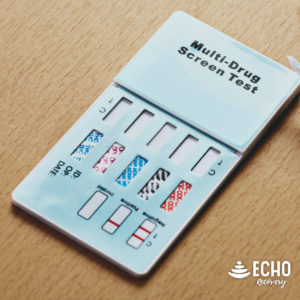In recent years, America has quietly been going through an opioid crisis that is only just now beginning to receive the attention it deserves. The most recent drug on the scene is fentanyl, a synthetic opioid that is now the main cause of overdose deaths in the country. Fentanyl is a white powder dealers and users can cut into cocaine without detection. This combination can easily lead to a fentanyl overdose.
New proposals would provide fentanyl test strips that would be available for anyone wanting to detect any traces of fentanyl in their cocaine. The idea has proven controversial, with some seeing it as a way to cut down on fentanyl deaths while others believe it avoids dealing with the real issue.
Cocaine And Fentanyl Overdose Deaths
In 2012, more than 4,400 people died from cocaine overdoses. Not counting methadone, only about 180 of those deaths involved a synthetic opioid like fentanyl. By 2016 – the last year for which we have complete data – cocaine deaths had risen to 10,400. Alarmingly, 4,200 of those involved a synthetic opioid other than methadone.
Cocaine overdose deaths are a problem that has traditionally hit the African-American community disproportionately hard. The use of heroin and fentanyl heroin, on the other hand, has arisen mainly in the white community. Some believe that the mixing of the two drugs could represent an opioid crisis spreading to a new demographic. But what is the reason for the link between the two?
Various Hypotheses
Though no one knows for sure why fentanyl is suddenly showing up in cocaine, there are a number of theories that experts find plausible.
- Users are mixing the two. They may be doing this unknowingly, because many dealers are selling fentanyl and calling it heroin. The problem is that fentanyl is far more potent, and if a user takes a heroin-sized dose of fentanyl, they could easily wind up taking too much. It is also possible that users are knowingly mixing the two together. A “speedball” is a mix of heroin and cocaine and has long been popular among drug abusers. As fentanyl increasingly replaces heroin, it is natural to find it as part of a speedball now.
- Dealers are mixing the two deliberately. There is some evidence to support this, as some batches of cocaine seized by police have tested positive for fentanyl. However, this occurrence is rare. It does not make much sense for dealers to mix the two, as one is an “upper” and the other a “downer”. Dealers don’t want to put their customers off any more than any other seller, and now that fentanyl is gaining notoriety as a dangerous drug, it makes less sense for dealers to risk the lives of people who are paying customers.
- Dealers are mixing the two accidentally. If a dealer uses the same table to cut their cocaine and fentanyl without cleaning it in between, this could lead to the two getting mixed together. This might explain why such a small proportion of seized cocaine batches actually have fentanyl in them.
- Better data. A final possibility is that the amount of fentanyl-linked cocaine deaths is not really changing, we are just getting better at detecting it as a cause of death. While it seems unlikely that this would explain the entirety of the apparent epidemic, some experts maintain it could be part of it.
Test Strips May Arrive Soon
 Amidst the growing opioid crisis, Annapolis may soon offer test strips for fentanyl detection. A test kit could be as inexpensive as $1 per unit. The test itself is as easy as sprinkling a little bit of the drug into a cup of water and then putting the strip in the water. One line on the strip means there is fentanyl, two lines means there is none.
Amidst the growing opioid crisis, Annapolis may soon offer test strips for fentanyl detection. A test kit could be as inexpensive as $1 per unit. The test itself is as easy as sprinkling a little bit of the drug into a cup of water and then putting the strip in the water. One line on the strip means there is fentanyl, two lines means there is none.
The effectiveness of such a plan depends on why fentanyl and cocaine are suddenly linked. If dealers are mixing fentanyl into their cocaine, whether by accident or on purpose, there may be a demand for the test strips if word about them spreads. However, as we have seen, there is scant evidence of widespread cocaine batches laced with fentanyl.
If it is principally users who are mixing the two, then there is no reason to believe there will be demand for a product that tells them what they already know, and cannot tell them how much fentanyl they have mixed in. We should also note that toxicology tests only determine the presence of cocaine and fentanyl in the body of the deceased. It is possible that the addict took the two drugs separately, which would further obviate the use of test strips.
We Should Have Seen This Coming
Test strips for fentanyl may do some good, but the drug problem is much bigger than that, and there are reasons to wonder just how much good it can do. Is someone who tests their drug supply and finds that it contains fentanyl going to get rid of it? It is likely that he or she may find it difficult to resist taking the drug if it means waiting several more hours until they can purchase more. Additionally, they may not have the money on hand to buy another dose. Although using the test strips suggests a level of self-care, those struggling with addiction also tend to lean towards high-risk behaviors.
Another issue is that the strips reveal the presence of fentanyl, but not the concentration. A person who decides to test their drugs has no way of knowing how much fentanyl the dealer mixed with the cocaine and may decide to risk taking the dose anyway.
Lastly, the mere availability of test strips does not guarantee that anyone will want to use them, or even see the need. If a user has already been taking fentanyl, even unknowingly, they may have developed a chemical dependency on the drug. If avoiding fentanyl means going through fentanyl withdrawal, they may see no reason to use the strips.
Treatment Is The Only True Solution
Ultimately, strips that test for fentanyl can have only limited usefulness at best. Even if someone struggling with addiction can use them to avoid taking fentanyl, they still are taking a harmful drug that can do damage on its own. Any type of drug addiction makes it impossible to lead a normal, healthy life. The only way to make drug use safe, is to not take drugs at all, and that means a long-term addiction treatment plan.
Treatment centers, such as Echo Recovery in Maryland, give people the best hope to beat their addiction and start on the road to recovery. A good rehab center offers treatment, counseling, group therapy and a sponsor or mentor to support a person going through the recovery process. This is the best addiction relapse prevention. Those in Annapolis who require drug detox can contact Echo Recovery for help.
Every individual’s life experience, outlook and future goals are different. A treatment center will adapt their treatment plans to suit the individual. This offers the best chance at recovery, and recovery is the true goal for anyone with addiction problems. A fentanyl test strip is a band aid for a problem far worse than a cut to the skin.

Experienced Chief Executive Addiction Recovery and Mental Health Professional
Business professional in the Addiction Recovery and Mental Health industry for the past 26 years. Caring, compassionate and strongly motivated to make a difference in the organizations I am affiliated with and welfare of the population we serve. Currently focused on advocating, educating and developing projects leveraging evidence based, real time technology to support individuals in recovery.


